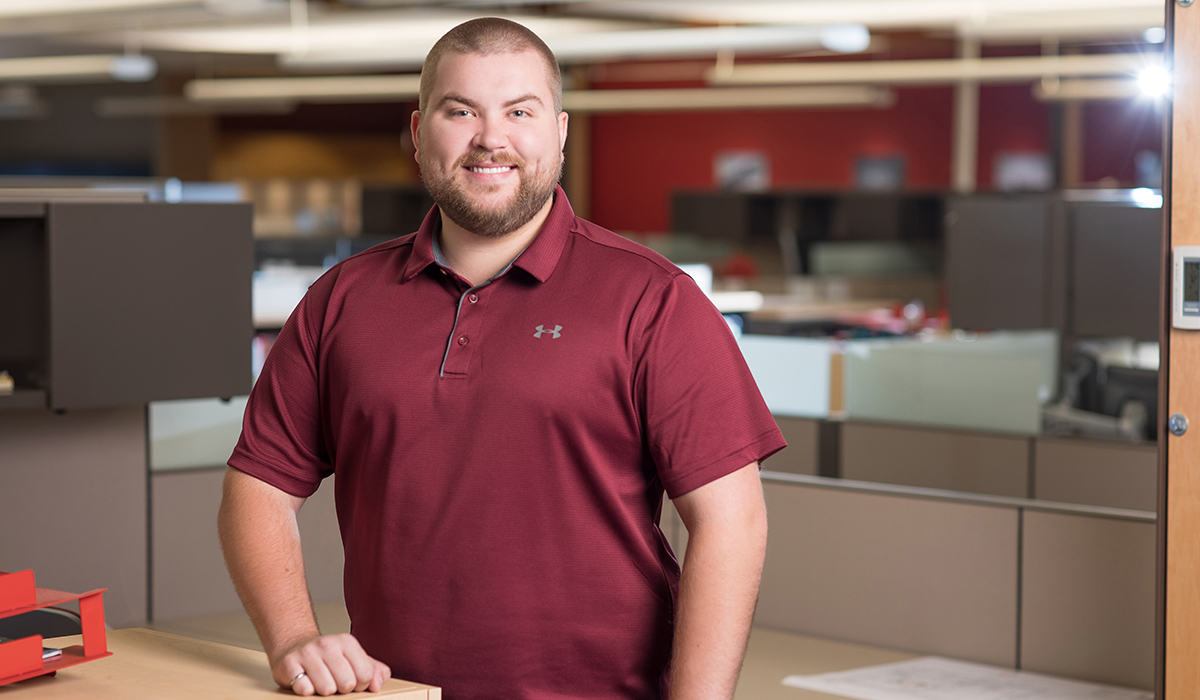Austin DeJong needs new business cards with the letters “PE” after his name.
But for now, the accomplishment of passing the exam to become a Professional Engineer will do just fine.
Austin, a structural engineer in TSP’s Sioux Falls office, took the test in December and learned that he passed just seven days later. The South Dakota Board of Technical Professions formally approved Austin’s license on Jan. 27.
To become an engineer, an individual must complete a four-year degree from an accredited engineering school, then pass the Fundamentals of Engineering exam, which is usually followed by four years of post-college work with a licensed engineer to gain experience. Passing the Principles and Practice of Engineering (PE) exam is the final step to earning a license from a state board.
Austin’s situation was slightly different because he earned a master’s degree, which reduced his post-college work requirement to three and a half years.
“Going through school, that PE is like Mount Everest,” Austin said. “That’s the goal.”
The college years for engineering students, Austin said, are primarily geared toward retaining information.
“But on the job, all that schooling kind of drifts away and your experience exponentially shoots up through the roof,” he said.
“Then you start thinking, it’s about time to start studying for this thing.”
For a month, Austin studied on Friday afternoons plus the weekends.
He used his undergraduate books and homework assignments as study guides plus a Reference Manual that Austin calls “the largest book you’ve ever seen.”
The PE Civil exam is equally divided between breadth and depth questions. The breadth items include topics from all five branches of civil engineering (water resources, geotechnical, structural, transportation, environmental). The depth items focus more closely on a specific area of practice.
In Austin’s case, the 80-question exam was entirely online and took eight hours to complete.
As you might expect, passing the PE exam comes with a strong sense of relief.
Seven days after the exam, Austin received an email from the company that scores the test, but the contents of the email were initially unknown.
He did not open the email until he contacted his wife, Jalissa, and they were on the phone together when he learned that he passed.
“I just felt my shoulders drop 12 inches, and the rest of that day and the rest of that week, I was like, ‘I passed, I’m good,’” he said.
Austin joined TSP in June 2019. Addition and remodeling work in the Hamlin, SD School District was his first project with TSP.
He lists the Capital Services building in Sioux Falls and the MACCRAY School District among his other memorable project work.
Austin is looking forward to additional responsibilities and continued structural opportunities at TSP.
“There is something about being able to see what you’re doing go up and be able to say, ‘this building is standing because of what I do,’” he said.
“That’s what I like. It adds a little bit of pressure to the job. It makes you question decisions a lot, but I think the reward is as big as the decisions are.”

